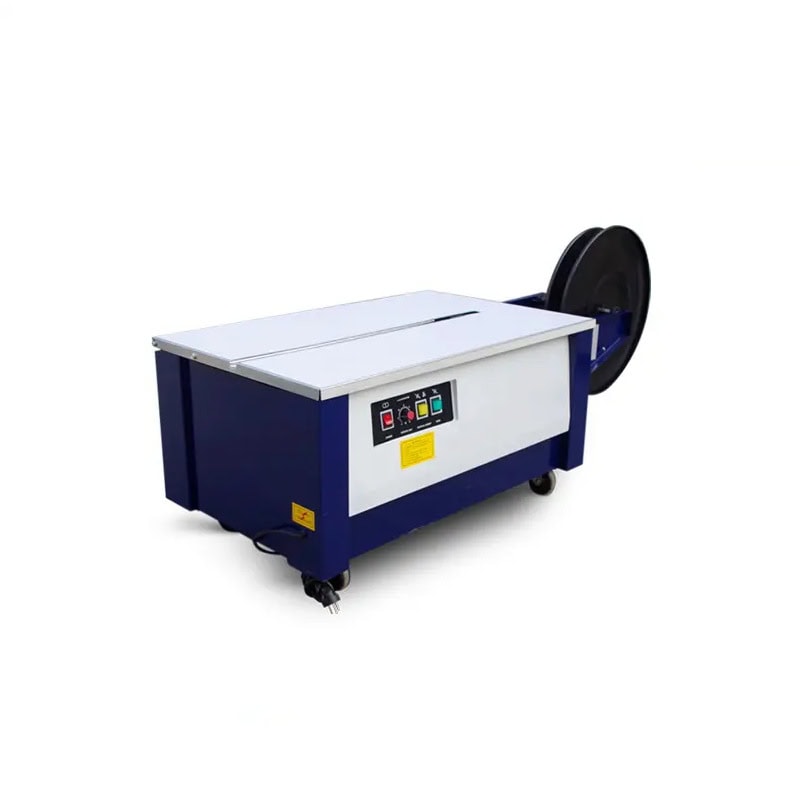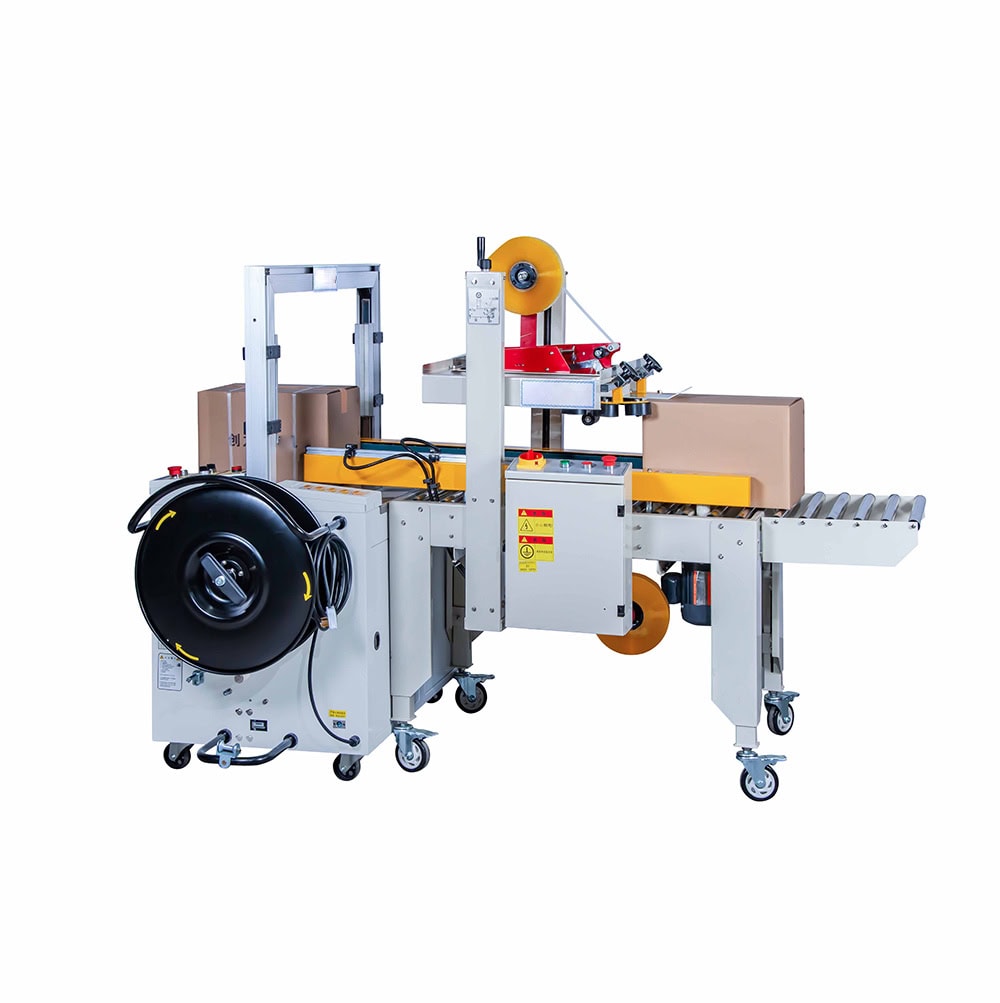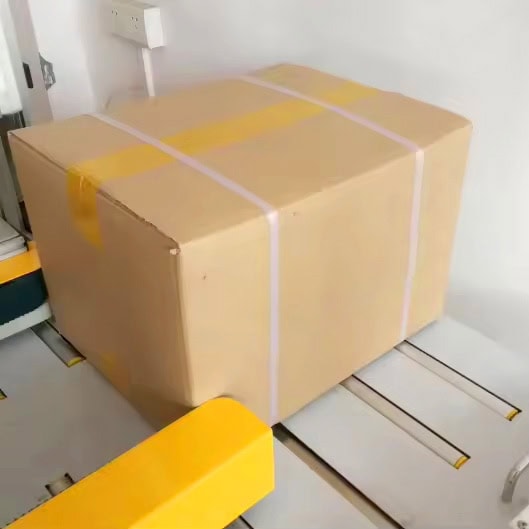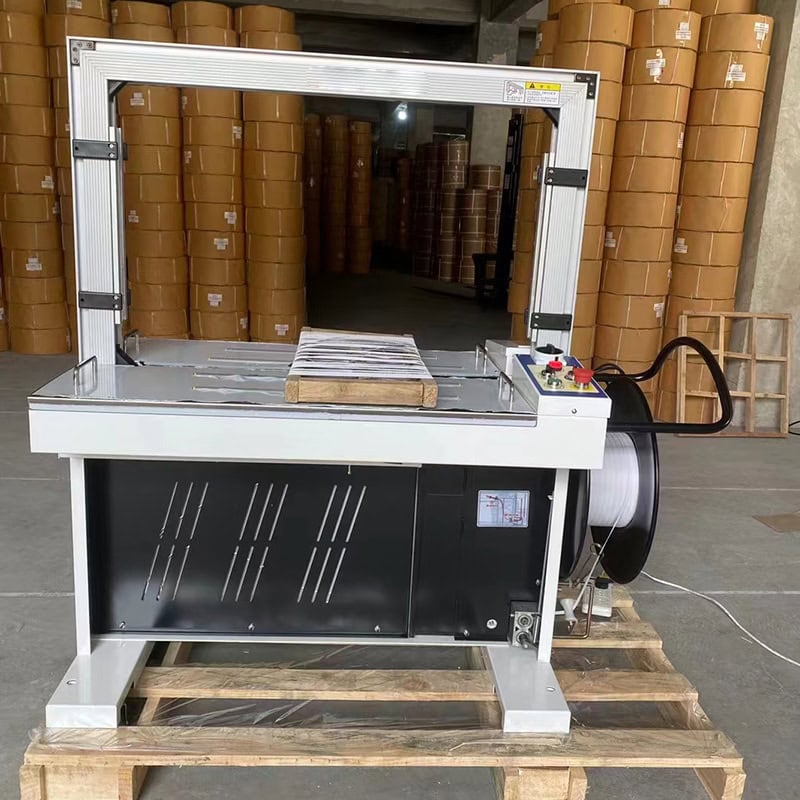Strapping is critical in the packaging process, especially in industrial settings where products require secure handling during storage and transportation. Improper strapping can lead to product damage, operational inefficiencies, and increased costs. An automatic strapping machine provides a high-speed, reliable solution for ensuring items are safely secured for transport.
An automatic strapping machine applies straps to secure items in packaging processes. It’s widely used for stabilizing packages and pallets, ensuring safety during storage and transit.
For industries focused on optimizing efficiency and safety, an automatic strapping machine is essential. It minimizes manual labor, speeds up packaging, and enhances product stability during shipment, making it an asset for high-demand operations.

What is an Automatic Strapping Machine?
An automatic strapping machine is a specialized device used to apply strapping material, typically polypropylene or steel, around packages or pallets. The machine feeds, tightens, and secures the strapping automatically, providing consistent tension and seal strength to keep items stable during storage and transport. With minimal manual input, the automatic strapping machine offers a reliable method for bundling and securing goods efficiently.
These machines are widely used in manufacturing, warehousing, and shipping industries, where they contribute to streamlined packaging processes and significantly reduce the risk of product movement or damage during transit. Automatic strapping machines are a preferred choice for companies aiming to increase productivity and ensure the safe handling of goods.
Key Functions of an Automatic Strapping Machine
An automatic strapping machine automates the process of strapping packages, reducing the need for manual labor and increasing the speed and accuracy of the strapping process. The machine automatically adjusts to apply the required amount of tension, cuts the strap after securing, and applies a seal, ensuring packages remain stable.
Automated strapping contributes to faster, more efficient packaging lines, making these machines ideal for large-scale operations. By integrating an automatic strapping machine, businesses can decrease the time spent on packaging and ensure that items are consistently strapped according to specific requirements, enhancing the overall reliability of packaging.
Types of Strapping Machines: Automatic vs. Semi-Automatic
Automatic strapping machines operate independently, requiring minimal human intervention. Once the package is in place, the machine completes the entire strapping process automatically, making it suitable for high-volume operations. In contrast, semi-automatic strapping machines require an operator to manually position the package and initiate the strapping cycle. These machines still improve efficiency but are better suited for moderate-volume applications where cost savings on a fully automated solution might be preferred.
In an industrial setting, fully automatic machines are often integrated with conveyors and other automation equipment, while semi-automatic machines provide flexibility and are typically more affordable for smaller businesses or operations with lower throughput requirements.

Core Components of an Automatic Strapping Machine
Key components of an automatic strapping machine include:
- Strapping Head: The central mechanism that tensions, cuts, and seals the strap around the package.
- Strap Dispenser: Feeds the strap into the machine, typically designed to hold large rolls for continuous operation.
- Control Panel: Allows operators to set specific parameters such as strapping tension, speed, and cycle count for customized operations.
Each component is crucial for consistent, high-quality strapping. For example, the control panel enables operators to adjust settings based on the specific weight and size of packages, ensuring precise strapping every time.
Materials Used in Strapping
Automatic strapping machines can use a variety of materials depending on the application:
- Polypropylene: A flexible, cost-effective option commonly used for lighter packages.
- Steel: Offers greater strength and is preferred for heavier loads or items requiring higher tension.
- Polyester: Provides strength similar to steel but is lighter and corrosion-resistant, suitable for both manual and automatic machines.
The choice of material depends on factors such as package weight, strapping tension requirements, and transportation conditions. Polypropylene is popular in general packaging, while steel is ideal for industrial applications involving heavy products.
Applications of Automatic Strapping Machines in Industry
Automatic strapping machines serve a range of industries by offering efficient, high-speed strapping solutions:
- Warehousing: Ensures stable pallet loads for storage and shipping.
- Manufacturing: Automates bundling of products like pipes, cartons, or boxes on production lines.
- E-commerce Fulfillment: Secures parcels for transportation, ensuring goods arrive intact and securely strapped.
These machines are invaluable in sectors that handle high volumes of products. For example, a vacuum packaging machine might complement a strapping machine in a manufacturing setting, creating tightly packed, vacuum-sealed units that are then strapped for added stability during shipping.

Advantages of Using an Automatic Strapping Machine
Using an automatic strapping machine offers several advantages:
- Increased Productivity: Automates a repetitive task, allowing operators to focus on other responsibilities, leading to faster throughput.
- Cost Savings: Reduces labor costs and minimizes material waste through precise strapping application.
- Consistent Quality: Ensures each package is strapped with uniform tension, reducing the risk of instability during transit.
These advantages make automatic strapping machines ideal for large-scale production environments, where efficiency and cost-effectiveness are critical.
Operating an Automatic Strapping Machine
Operating an automatic strapping machine is straightforward, with only basic setup required. Operators place the package on the machine’s platform, where it is automatically strapped according to preset parameters. Some machines may also have a touch panel or control screen for additional adjustments, including strapping tension and cycle frequency.
Automation makes it easy to integrate these machines into existing production lines, allowing operators to oversee the process with minimal supervision, improving overall workflow efficiency.
Choosing Between Automatic and Manual Strapping
When deciding between automatic and manual strapping solutions, consider factors such as:
- Volume of Packages: Automatic machines are better suited for high-volume operations.
- Budget: While automatic machines are a higher upfront investment, they often lead to long-term savings in labor and material costs.
- Flexibility Needs: Manual tools or semi-automatic machines may be ideal for companies requiring flexible strapping across various products.
Businesses focused on high productivity, such as those using a Flag Labeling Machine, often benefit from pairing automation in both labeling and strapping, creating a streamlined process from product packaging to shipping.

Alternatives to Automatic Strapping Machines
For companies not ready to invest in a fully automated strapping machine, alternative solutions include:
- Manual Strapping Tools: Suitable for low-volume applications and small businesses.
- Semi-Automatic Strapping Machines: Offer partial automation for a lower cost than fully automatic models.
- Shrink Wrap Machines: Often used in tandem with strapping to stabilize products on pallets.
Each alternative provides a degree of efficiency, but fully automatic machines offer the best long-term solution for large-scale operations needing consistent, reliable strapping.
Conclusion
An automatic strapping machine is a crucial asset for any industry requiring secure, efficient packaging. With the ability to automate the strapping process, these machines provide cost-effective, high-quality solutions that enhance packaging efficiency and product safety.









